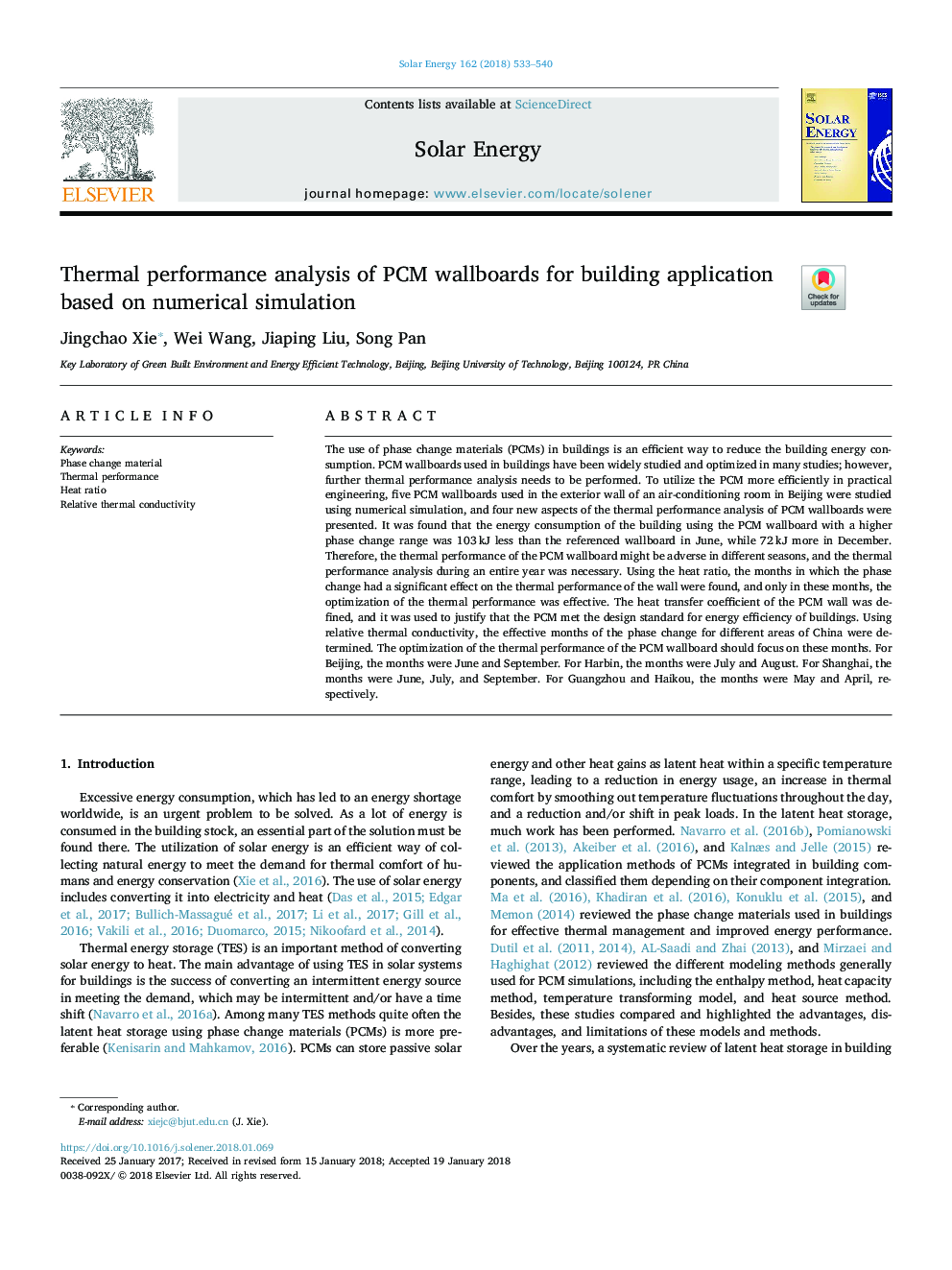| Article ID | Journal | Published Year | Pages | File Type |
|---|---|---|---|---|
| 7935760 | Solar Energy | 2018 | 8 Pages |
Abstract
The use of phase change materials (PCMs) in buildings is an efficient way to reduce the building energy consumption. PCM wallboards used in buildings have been widely studied and optimized in many studies; however, further thermal performance analysis needs to be performed. To utilize the PCM more efficiently in practical engineering, five PCM wallboards used in the exterior wall of an air-conditioning room in Beijing were studied using numerical simulation, and four new aspects of the thermal performance analysis of PCM wallboards were presented. It was found that the energy consumption of the building using the PCM wallboard with a higher phase change range was 103â¯kJ less than the referenced wallboard in June, while 72â¯kJ more in December. Therefore, the thermal performance of the PCM wallboard might be adverse in different seasons, and the thermal performance analysis during an entire year was necessary. Using the heat ratio, the months in which the phase change had a significant effect on the thermal performance of the wall were found, and only in these months, the optimization of the thermal performance was effective. The heat transfer coefficient of the PCM wall was defined, and it was used to justify that the PCM met the design standard for energy efficiency of buildings. Using relative thermal conductivity, the effective months of the phase change for different areas of China were determined. The optimization of the thermal performance of the PCM wallboard should focus on these months. For Beijing, the months were June and September. For Harbin, the months were July and August. For Shanghai, the months were June, July, and September. For Guangzhou and Haikou, the months were May and April, respectively.
Related Topics
Physical Sciences and Engineering
Energy
Renewable Energy, Sustainability and the Environment
Authors
Jingchao Xie, Wei Wang, Jiaping Liu, Song Pan,
